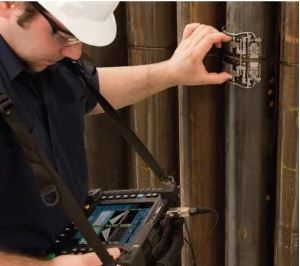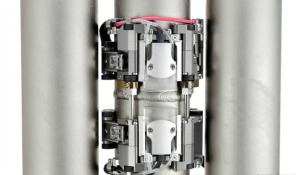Phased array (PA) ultrasonic examination offers many advantages over current applied non-destructive testing (NDT) methods, especially for wall thickness smaller than 8 mm.
 Erik Zeelenberg, Lead NDE Specialist, LRQA Netherlands
Erik Zeelenberg, Lead NDE Specialist, LRQA Netherlands
Phased array (PA) ultrasonic examination offers many advantages over current applied non-destructive testing (NDT) methods, especially for wall thickness smaller than 8 mm. However, no regulation for this technique is available yet - current available codes and standards for ultrasonic testing are mainly aimed at wall thicknesses greater than 8mm.
Despite its multiple benefits over radiography, lack of standardisation is why PA is not used to its full potential. Nevertheless, there are opportunities to apply this method now.
About five years ago, examination with PA as an alternative to radiography was carried out under LRQA supervision at one of the largest power plants in the Netherlands, the Claus power station in Maasbracht. The examination focused on using PA on welds in pipes and furnaces with small wall thicknesses.
Since then, we have seen PA applied in more situations. The large NDT companies are also responding to this need of our customers and are offering PA services.
Radiography has historically faced safety and accessibility problems. These issues can lead to project delays, extra costs and in some cases, the procedures do not meet the quality requirements of the applicable code or standard.
However, semi mechanized systems such as PA avoid these problems and will actually increase safety.
| Radiography | Phased Array | |
|---|---|---|
| Safety | Need to remove personnel from the area around the examination | No ionizing radiation to be avoided |
| Efficiency | Additional costs and delays | Quick and complete research results |
| Quality | Limited number of shots possible and difficult to meet quality requirements | Better accessibility of the weld in combination with optimized mechanical scanners |
Regulation
The benefits of phased array ultrasonics are clear – now the legislation needs to catch up, in particular for the use of PA for wall thicknesses smaller than 8mm. LR does accept this deviation from the regulations (through a waiver) where radiography is required regularly, but it is subject to individual conditions. It is crucial that these requests are treated uniformly, therefore the inclusion of this technique in international regulations is absolutely necessary.
At this time, the KINT, or the Dutch association for NDT and Inspection, is working to establish rules for how the research should be carried out (the method). It has produced a document that has been presented to the ISO subcommittee for the technical committee for testing and inspection of welds (ISO/TC44/SC5), but it was rejected. The reason: too few experts available to help develop the proposal into a standard. After a strong lobby from Netherlands on the last ISO meeting in Helsinki the document was accepted. Within two years an official standard should be published.
Acceptance criteria
The development of acceptance criteria is not an easy task. The criteria needs to be at the same level of quality achieved through radiographic examination. To determine this, there are three aspects:
-
Performance standard (how to perform the examination)
-
Acceptance criteria (what do you do with the results)
-
A standard for training and certification of personnel (who is allowed to execute)
 The KINT Research Foundation is initiating a research and development project to develop acceptance criteria. Stakeholders in this project include end users, manufacturers, NDT companies and engineering firms. They will help determine what the reliability of this technique is according to the defined scope.
The KINT Research Foundation is initiating a research and development project to develop acceptance criteria. Stakeholders in this project include end users, manufacturers, NDT companies and engineering firms. They will help determine what the reliability of this technique is according to the defined scope.
LRQA has played a strong role in initiating and coordinating the development of the regulations. The final document of the acceptance criteria, supported and accompanied by LRQA, will be submitted to the ISO Committee.











